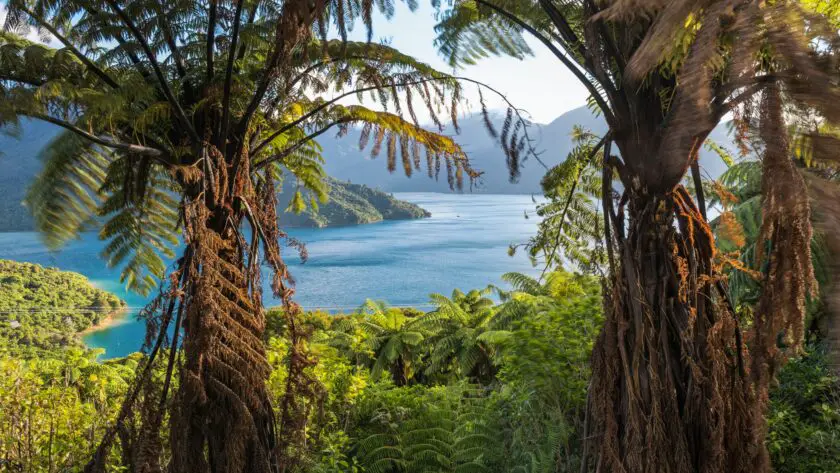Zealandia is a continent that lies beneath the South Pacific Ocean and is one of the Earth’s seven continents. It was discovered in the late 20th century by geologists who were studying the ocean floor in the area.
Prior to its discovery, Zealandia was believed to be part of a larger continent, Gondwana, which was made up of what is now Africa, South America, Antarctica, India, Australia, and New Zealand.
The idea that Zealandia was a separate continent began to gain traction in the 1990s when scientists studying the seafloor in the region noticed that it had several characteristics that were similar to those found on other continents, including elevated topography, diverse and thick crust, and the presence of large-scale rock formations.
In 2017, a team of scientists from New Zealand, Australia, and New Caledonia published a paper in the Geological Society of America that officially declared Zealandia a continent.
The team argued that Zealandia met all the criteria necessary to be classified as a continent, including being geologically distinct, elevated above the surrounding seafloor, and having a diverse range of rock types and ages.
The discovery of Zealandia has had significant implications for our understanding of Earth’s history and the evolution of the planet’s geology.
It has also opened up new opportunities for scientific exploration and research in the region, as well as raised questions about how Zealandia might have influenced the development of life in the South Pacific.
Zealandia is believed to have separated from Australia about 80 million years ago, and from Antarctica about 100 million years ago. It gradually sank below the water as the Pacific Plate shifted and the sea level rose, and is now mostly submerged.
The continent covers an area of approximately 4.9 million square kilometers (1.89 million square miles), making it roughly the size of India. However, only about 6% of Zealandia is above sea level, including New Zealand, New Caledonia, and a few smaller islands.
Scientists have suggested that Zealandia could be home to a variety of unique and undiscovered species, both on land and in the surrounding waters.
Some studies have even suggested that Zealandia could be a “lost continent” with links to the origins of life on Earth.
In addition to its geological and biological significance, Zealandia has cultural and historical significance for the indigenous Maori people of New Zealand, who believe that the land is sacred and has important connections to their ancestors and traditional way of life.
Scientists are continuing to study Zealandia to learn more about its geological history and the potential impacts of climate change and other environmental factors.
Some researchers are also interested in exploring the potential for extracting resources from the continent, such as minerals and oil, although there are concerns about the environmental impact of such activities.
The latest research on Zealandia suggests that it may have played a greater role in shaping the climate and oceanography of the Pacific region than previously thought.
In a study published in the journal Nature Geoscience in May 2021, researchers used sediment samples from the ocean floor around New Zealand to reconstruct the climate history of the region over the past 70 million years.
The study found that Zealandia’s emergence and subsequent submergence had a significant impact on the ocean currents and climate patterns in the region.
Specifically, the researchers found that the emergence of Zealandia and the opening of a seaway between Australia and Antarctica around 34 million years ago caused a major shift in ocean circulation and temperature, which in turn affected global climate patterns.
The study also found evidence of major climate events in the region, including periods of extreme warmth and cooling, which were linked to changes in the circulation of the ocean and atmosphere.
Overall, the research suggests that Zealandia played a key role in shaping the climate and oceanography of the South Pacific, and that further study of the region could provide important insights into how the Earth’s climate has evolved over time.
In October 2021, a team of scientists announced the discovery of a new and previously unknown volcanic area on Zealandia’s seafloor, located east of New Zealand’s North Island.
The area, which has been named the “Aotearoa Volcanic Zone,” is thought to have been active as recently as 50 million years ago and may have contributed to the formation of Zealandia’s landmass.
Another study published in October 2021 used seismic data to create a detailed map of Zealandia’s crust and upper mantle. The map revealed new information about the continent’s tectonic history and the structure of its underlying geology.
In December 2021, a group of researchers from New Zealand and Australia embarked on a month-long research expedition to study Zealandia’s seafloor, using advanced technology such as autonomous underwater vehicles and seafloor drilling equipment.
The team’s goal was to collect data and samples to better understand the geology and history of Zealandia, as well as its potential for supporting unique and undiscovered forms of life.

In terms of cultural significance, there have been ongoing efforts by Maori communities in New Zealand to gain official recognition of Zealandia as a distinct continent with its own identity and significance.
Some Maori leaders have argued that this recognition would help to strengthen cultural and environmental protections for the region and ensure that its unique heritage is respected and preserved for future generations.
Overall, the ongoing research and discoveries related to Zealandia continue to shed new light on the geological, biological, and cultural significance of this vast and largely unexplored region of the world. Let’s just hope the corporate greed doesn’t ruin this wondrous discovery and it can be preserved for many decades to come.
If you’d like to visit Zealandia, check it out here!








